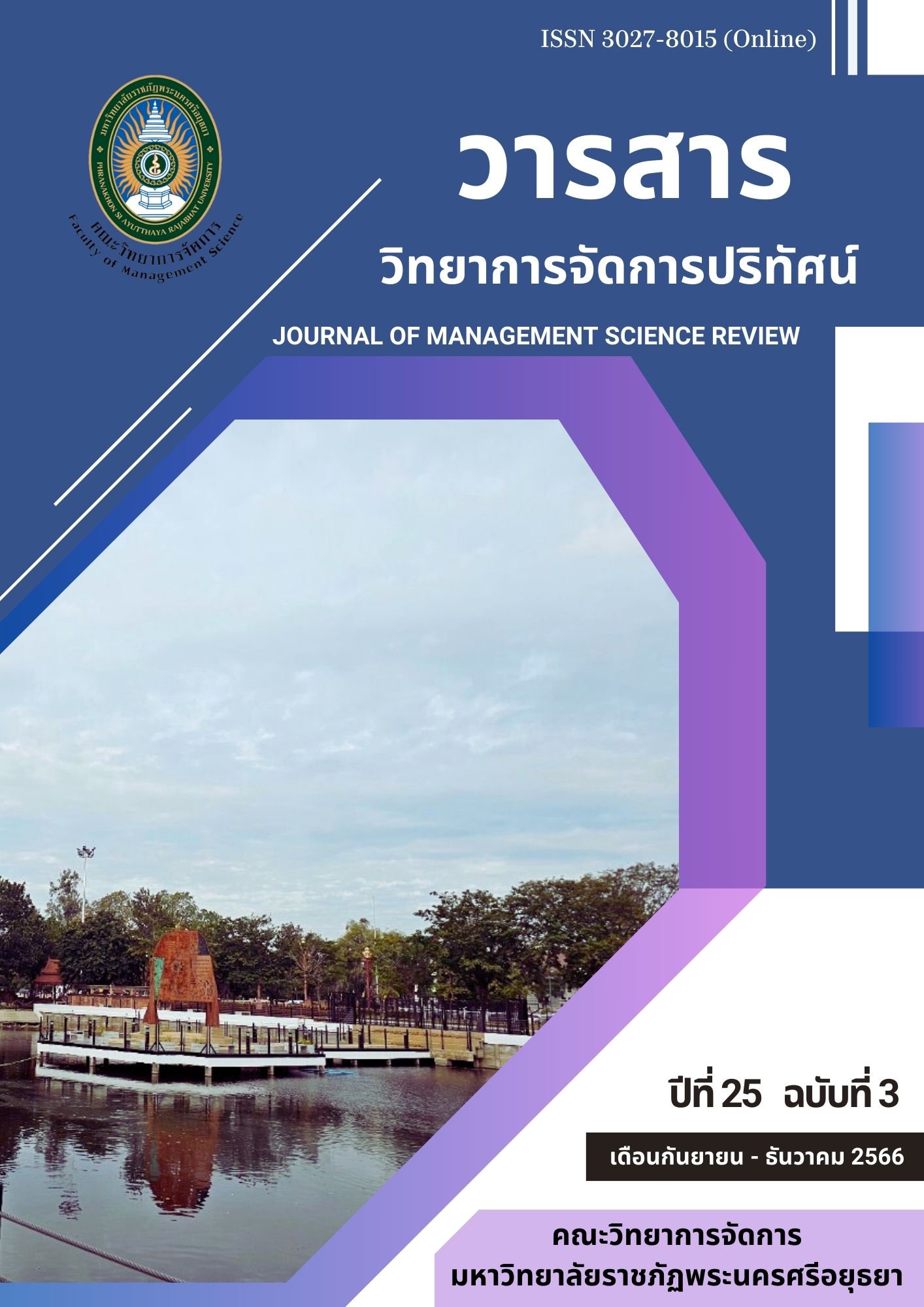Foreign Direct Investment of China: The Relationship between Chinese Demographic Factors and OFDI When China Steps into Aging Society
Keywords:
Direct Investment, China, Demographic structure, Aging SocietyAbstract
This research aimed to 1) find the relationship between demographic factors and the values of Outward Foreign Direct Investment (OFDI) in China, and 2) study the values of foreign direct investment, types of business, and host countries. This research used both quantitative and qualitative types. The quantitative research applied Pearson Correlation to test the relationship. The data came from a Chinese government source. The qualitative research used documentary research.
The results of the study indicated that factors related in the same direction to the values of Outward Foreign Direct Investment in China were: 1) number of senior populations, 2) average family income, 3) number of urban populations, 4) educational level (bachelor degree), 5) state welfare, and 6) service sector workers. Factors related in the opposite direction to the values of Outward Foreign Direct Investment of China were: 1) number of rural populations and 2) educational level (senior and junior high school). The values of Chinese OFDI during the year 2010-2021 were increased every year. The average per year was US$(billion) 1,307.63. Those types of businesses highly invested were 1) Leasing and business service, 2) Wholesale and Retail Trades, 3) Manufacturing, 4) Financial Intermediation, and 5) Transport, Storage, and Post respectively. Chinese had invested in almost all regions in the world, the highest was the Hong Kong Special Administrative Region, and the next were the British Virgin Islands and Cayman Islands. For Asian, the highest was Singapore, the next were Indonesia and Vietnam respectively.
References
Attanasio, O. P. & Violante, G.L. (2000). The Demographic Transition in Closed and Open Economies: A Tale of Two Regions. Retrieved from https://publications.iadb.org/publications/english/viewer/The-Demographic-Transition-in-Closed-and-Open-Economies-A-Tale-of-Two-Regions.pdf
Bloom, D.E. & Finlay, J.E. (2009). Demographic change and economic growth in Asia. Asian Economic Policy Review, 4(1), 45-64. Retrieved from https://www.hsph.harvard.edu/wp-content/uploads/sites/1288/2013/10/PGDA_WP_41.pdf
Börsch-Supan, A. (1995). The impact of population aging on savings, investment and growth in the OECD area. Discussion Papers 512. Institut für Volkswirtschaftslehre und Statistik, No.512-95
Brooks, Robin Jermyn. (2003). Population Aging and Global Capital Flows in a Parallel Universe. IMF Staff Papers 50. Washington, DC: International Monetary Fund, 200-221.
Buckley, P. J., Clegg, L. J., Cross, A. R., Liu, X., Voss, H., & Zheng, P. (2007). The Determinants of Chinese Outward Foreign Direct Investment. Journal of International Business Studies, 38, 499-518.
Dunning, J.H. (1993). Multinational Enterprises and the Global Economy, Addison-Wesley, Wokingham. EUCCC (European Union Chamber of Commerce in China) (2017), China Manufacturing 2025: Putting Industrial Policy Ahead of Market Forces, EUCCC, Beijing
Fälth, J. (2021). Aging Populations and FDI Outflows - Exploring the effects of increasingly older populations on present and future levels of foreign direct investment. [Master’s Thesis]. Lund University. Retrieved form http://lup.lub.lu.se/student-papers/record/9068255
Foundation of Thai Gerontology Research and Development Institute (TGRI). (2020). Situation of The Thai Elderly 2019. Nakhon Pathom: Institute of Population and Social Research Mahidol University. Retrieved from https://www.dop.go.th/download/knowledge/th1610945020-322_0.pdf
Fuest, C., Hugger, F., Sultan, S. and Xing, J. (2019). Chinese acquisitions abroad: are they different?. CESifo , Center for Economic Studies & Ifo Institute, (7585)
Gao, C., Zhang, D., Cao, M. & Wen, Y. (2021). How does Human Capital Heterogeneity Affect Chinese Enterprises' Direct Investment in Africa?. Preprints. doi: 10.20944/preprints202111. 0075.v1
Kolstad, I. & Wiig, A. (2012). What determines Chinese outward FDI?. Journal of World Business, 47, 26-34. Retrieved from https://doi.org/10.1016/j.jwb.2010.10.017
Lyu, J.X. & Sun, W.K. (2015). Population Aging, Pension Funds and International Capital Flows: Mechanism and Empirical Research. Economic Theory and Business Management, 10, 20-34.
Ma, Y. (2022). Research on the Mechanism of Demographic Structure on China's Outward Foreign Direct Investment. Frontiers in Business, Economics and Management, 4(2), 168-171.
Office of the Leading Group of the State Council for the Seventh National Population Census. (2020) Major Figures on 2020 China population census, China Statistic Press.
Taengphet, C. & Wongurai, W. (2017). FAQ Focused and Quick Investment Paths from Dragon Land Issue 116. Bank of Thailand. 1-8. Retrieved from https://content.botlc.or.th/mm-info/BOTCollection/BOTFAQ/FAQ116.pdf
Tantivisethsak, P. & Na Ubon, A. . (2018). Factors Affecting China’s FDI in Thailand in Comparison with Other ASEAN Countries during 2000 – 2016. Suthiparithat, 32(104), 169–182. Retrieved from https://so05.tci-thaijo.org/index.php/DPUSuthiparithatJournal/article/view/243345
Wheelen T.L. & Hunger J.D. (2018). Strategic Management and Business Policy 15e. n.p.: Pearson Education.
Xia, J., Ma, X., Lu, J. W., & Yiu, D. W. (2014). Outward Foreign Direct Investment by Emerging Market Firms: a Resource Dependence Logic. Strategic Management Journal, 35(9), 1343–1363. Retrieved from: http://www.jstor.org/stable/24037344
Yang, J.-H., Wang, W., Wang, K.-L. & Yeh, C.Y. (2018). Capital intensity, natural resources, and institutional risk preferences in Chinese Outward Foreign Direct Investment. International Review of Economics and Finance, 55, 259-272. Retrieved form https://doi.org/10.1016/j.iref.2017.07.015
Zhao, J., & Lee, J. (2020). The Belt and Road Initiative, Asian infrastructure investment bank, and the role of enterprise heterogeneity in China’s outward foreign direct investment. Post-communist Economies, 33(4), 1-23. Retrieved form DOI: 10.1080/14631377.2020.1745560




